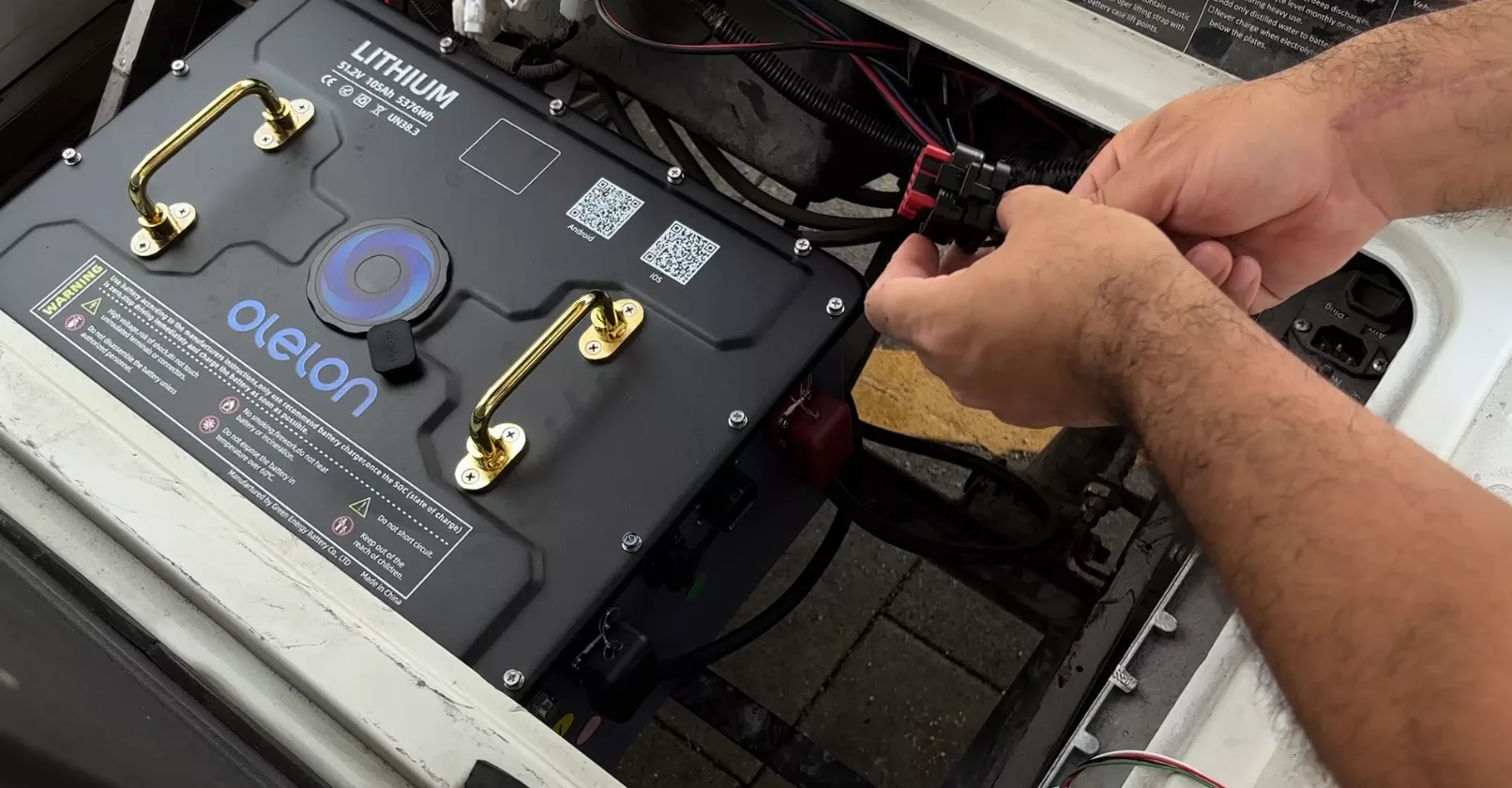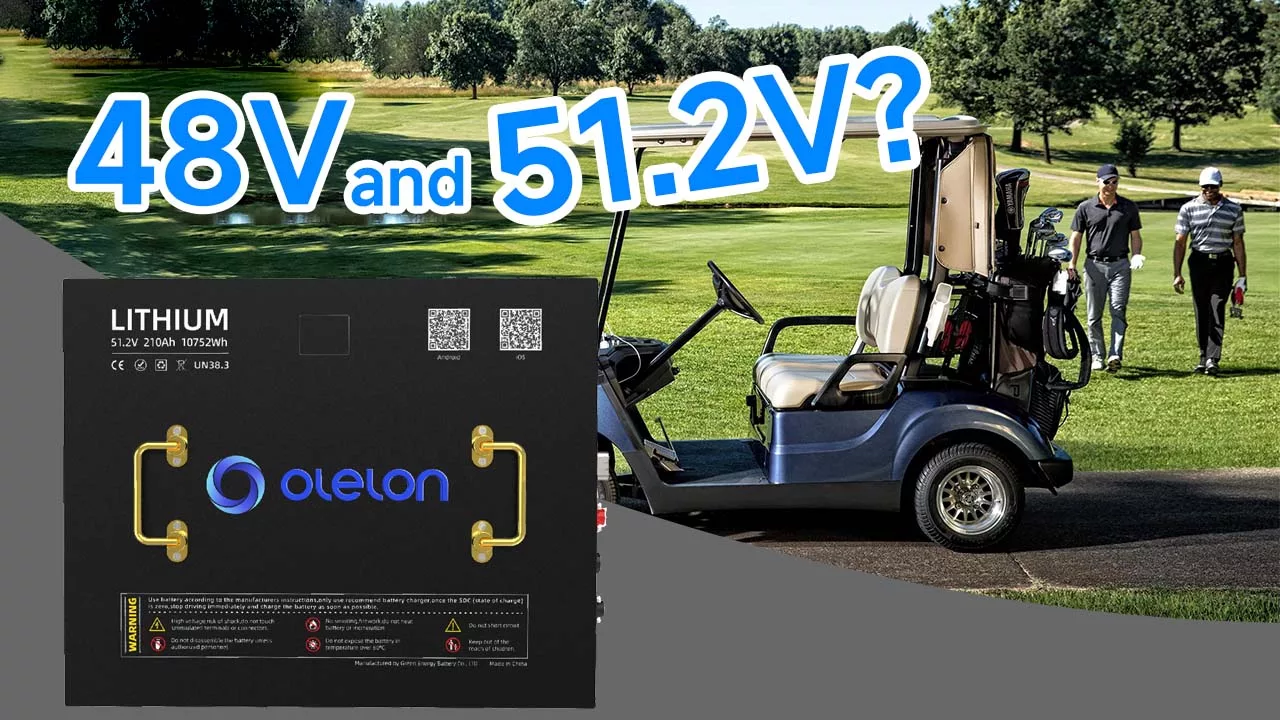
When it comes to powering golf carts, one of the most common battery configurations is the 48V system. However, with the growing popularity of lithium iron phosphate (LiFePO4) batteries, many manufacturers now offer 51.2V batteries as an alternative to traditional 48V lead-acid batteries. While both options are designed to power 48V golf carts, there are important differences that make 51.2V batteries a more efficient and modern solution. In this article, we'll explore the similarities and differences between 48V and 51.2V batteries and why 51.2V is increasingly becoming the preferred choice.
What is a 48V Battery?
In traditional golf cart systems, 48V batteries are often created by connecting multiple lead-acid batteries in series. This typically involves connecting six 8V batteries or eight 6V batteries in a sequence to achieve the desired 48V configuration. Lead-acid batteries are commonly used because of their low initial cost and widespread availability.
However, these 48V lead-acid batteries come with certain limitations:
- Lower energy density: Lead-acid batteries have a relatively low energy density, which means they require more space and weight to provide sufficient power.
- Heavy and bulky: To achieve 48V, golf carts need multiple lead-acid batteries, resulting in a heavier vehicle and a more complex battery configuration.
- Shorter lifespan: Lead-acid batteries generally have shorter lifespans compared to lithium batteries and require frequent maintenance, such as water refills and corrosion cleanup.
What is a 51.2V Battery?
A 51.2V battery, usually based on lithium iron phosphate (LiFePO4) chemistry, is a modern alternative to traditional 48V lead-acid systems. The slight voltage increase (51.2V vs. 48V) is within the acceptable operational range for most 48V golf cart systems, making 51.2V batteries compatible with existing vehicles. These batteries are typically made by connecting 16 LiFePO4 cells, each with a nominal voltage of 3.2V, in series.
Key benefits of 51.2V lithium batteries include:
- Higher energy density: LiFePO4 batteries offer 3-4 times the energy density of lead-acid batteries, meaning they can store more power in a smaller, lighter package.
- Longer runtime: Because of their higher capacity, 51.2V batteries provide longer run times, allowing golf carts to travel farther on a single charge.
- Minimal maintenance: Unlike lead-acid batteries, lithium batteries do not require regular maintenance, such as checking fluid levels or cleaning corrosion.
- Faster charging: LiFePO4 batteries charge faster than lead-acid batteries, reducing downtime for users.
Why 51.2V Instead of 48V?
You may wonder why lithium batteries are rated at 51.2V rather than the more familiar 48V. Here’s why:
- Voltage Range Flexibility: While the nominal voltage of lead-acid batteries is listed as 48V, the actual voltage varies during operation. When fully charged, a 48V lead-acid battery system typically operates between 53.2V and 59.2V. During use, the voltage gradually decreases and can drop as low as 36V-42V before the battery is considered discharged. The 51.2V LiFePO4 battery provides a similar range, with better stability and consistency in performance.
- Cell Configuration: LiFePO4 cells have a nominal voltage of 3.2V each. To create a battery pack that delivers the necessary voltage for a golf cart, 16 of these cells are connected in series (16 x 3.2V = 51.2V). This configuration allows for greater energy storage and ensures the battery delivers consistent performance, even as it discharges.
- Superior Performance at Lower Voltages: When the battery discharges to its lower voltage range, 16 cells in a 51.2V configuration still provide sufficient power to keep the golf cart running. In contrast, a system with only 15 cells (48V lithium) would provide less power at lower voltages (15 x 2.5V = 37.5V), which may not be enough to keep the cart moving effectively, especially on slopes or with heavy loads.

If both are lithium batteries, What is the difference between 48V and 51.2V?
The difference between 48V and 51.2V golf cart lithium batteries lies in the number of cells:
- 48V batteries consist of 15 cells (15 × 3.2V = 48V).
- 51.2V batteries use 16 cells (16 × 3.2V = 51.2V).
- 51.2V batteries provide about 5% more capacity and runtime compared to 48V batteries. (Note: The 48V standard originated from traditional lead-acid batteries, which were typically configured as 6×8V or 8×6V).
Regarding safety, 51.2V batteries will not damage golf cart equipment if the system is designed to accommodate the higher voltage. Most modern golf carts built for lithium batteries are compatible with this slight voltage increase. However, it’s important to confirm that the cart’s controller and motor can handle the 51.2V system for optimal performance and safety.
Conclusion: Which is Better for Your Golf Cart?
If you own a 48V golf cart, the slight voltage difference between 48V and 51.2V is well within the operational range of most golf carts, making the switch seamless and highly beneficial for those looking to improve their cart’s performance.
For golf cart owners who want a longer-lasting, lighter, and more powerful battery solution, 51.2V lithium batteries are the clear winner. With advanced technology and greater energy storage, they provide the power and efficiency needed to keep your golf cart running at peak performance for years to come.
Ready to upgrade? Contact us today to learn more about switching from a 51.2V lithium battery system for your golf cart!
